Anything that was once living can be composted. This includes food waste, organics, and materials that result from the storage, preparation, cooking, handling, selling, or serving of food. As more businesses and consumers focus on sustainability, composting plays an important role in reducing waste and sequestering carbon. When composting is concerned, it is important to understand the differences between composting at home and industrial composting.
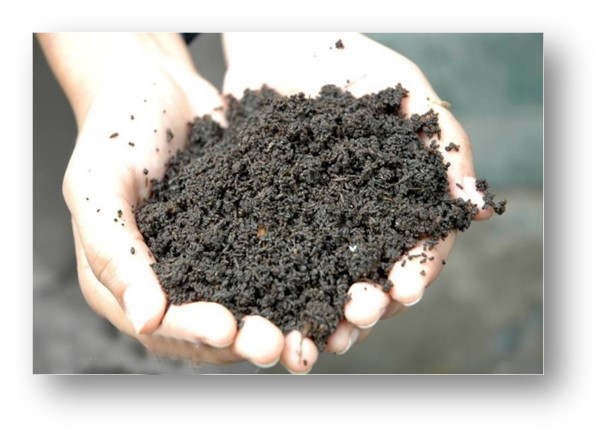
Industrially managed composting facilities regulate accepted materials based on adherence to standards and standards-based certifications such as ASTM D6400 and the Biodegradable Products Institute (BPI) certification. Industrial composting is an actively managed process where key factors are monitored to ensure effective and complete biodegradation. Composters monitor pH, carbon and nitrogen ratios, temperature, moisture levels, and more to maximize efficiency and quality and to ensure adherence with regulations.
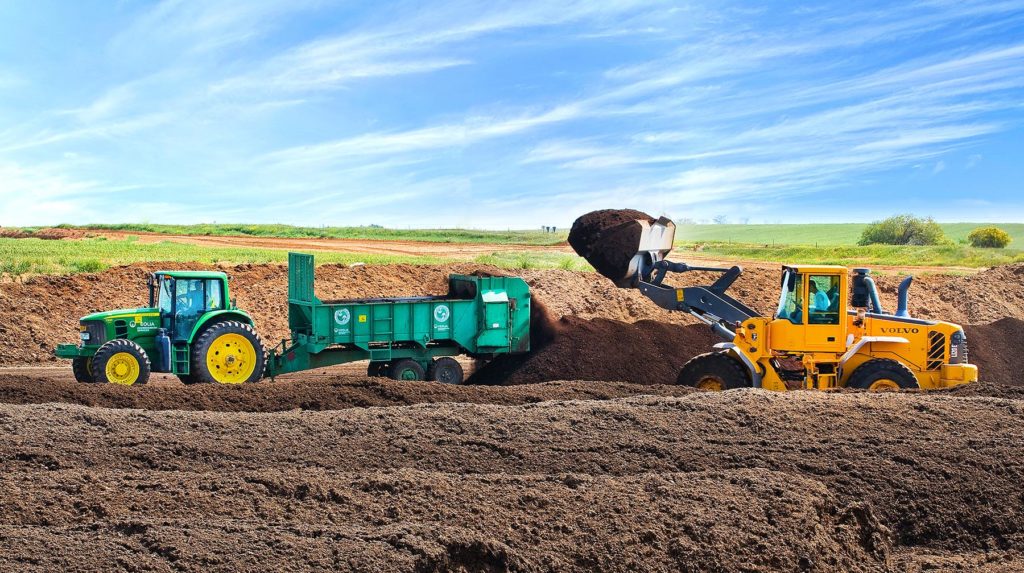
Key differences in these environments are varying microbial populations and activity as well as temperature, moisture, and levels of carbon and nitrogen which impact biodegradation.
The Dirt on Composting…
Composting is the most effective and sustainable way to dispose of organic materials and certified compostable bioplastics. Composting repurposes the carbon contained within these materials leaving nothing behind but heat, water, carbon dioxide, and biomass (compost). Bioplastic packaging also helps increase capture rates of food scraps and organics resulting in higher recycling rates and increased feedstocks for composting all while reducing food waste sent to landfills and the associated methane emissions.
What is Biodegradation?
Biodegradation is the breakdown of organic matter by microorganisms in the environment. This process begins with fragmentation and is completed through microbial processes which repurpose the carbon. There is no universal scientific definition for biodegradation that specifies the environment and duration of the process.
Industrial Composting
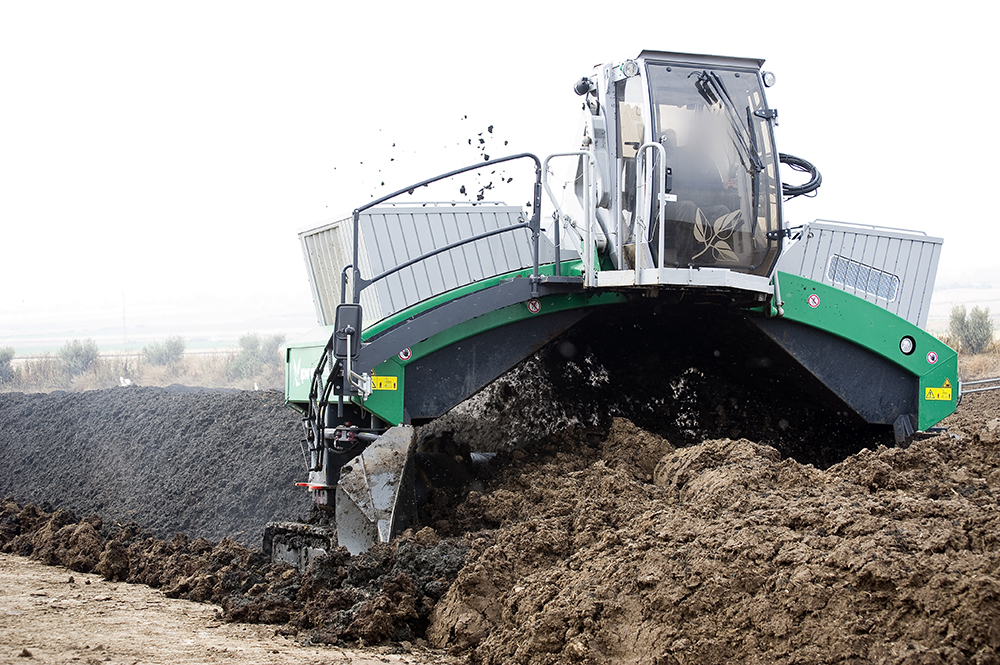
Industrial composting is an actively managed process that defines both the environment and duration for the process (in an industrial composting facility, in less than 180 days, the same rate as natural materials – such as leaves and grass clippings). Certified compostable products are engineered to not disrupt the composting process. As microbes break down these and other organic materials, heat, water, carbon dioxide, and biomass are released and no plastic is left behind.
Bioplastics and Composting
Certified compostable plastics are engineered in such a way that the polymer chains are susceptible to degradation through the hydrolytic, oxidative, or enzymatic disintegration processes. Once the polymer chains have been broken, microbes consume the fragmented residue as a food and energy source and release carbon dioxide, water, and biomass.
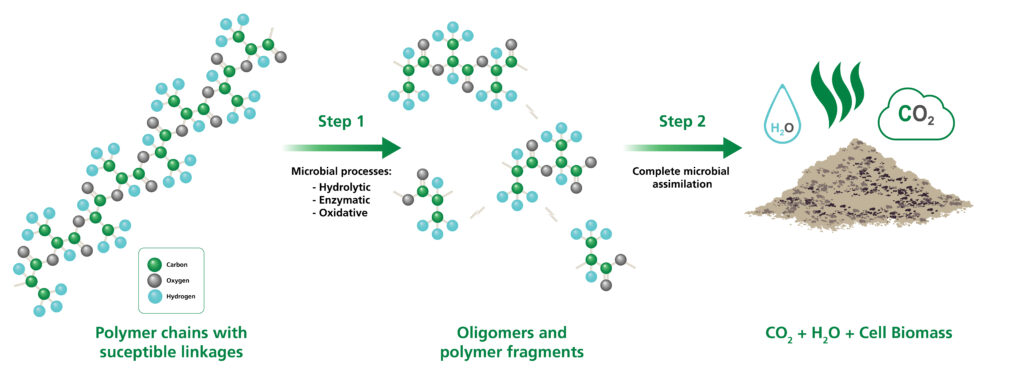
Home composting
Home composting is an effective way to dispose of specific organic materials such as grass clippings, leaves, weeds, and certain food scraps. Due to the variance in home compost environments (temperature, moisture, inputs, etc.) it is challenging to regulate this process as well as to evaluate claims of home compostability. Products which claim “home compostablility” can only reference test methods rather than pass/fail standards, which further complicates effective composting of such packaging and materials. There are home composting certifications under review in Europe, but at this time no such certification is active in the United States.
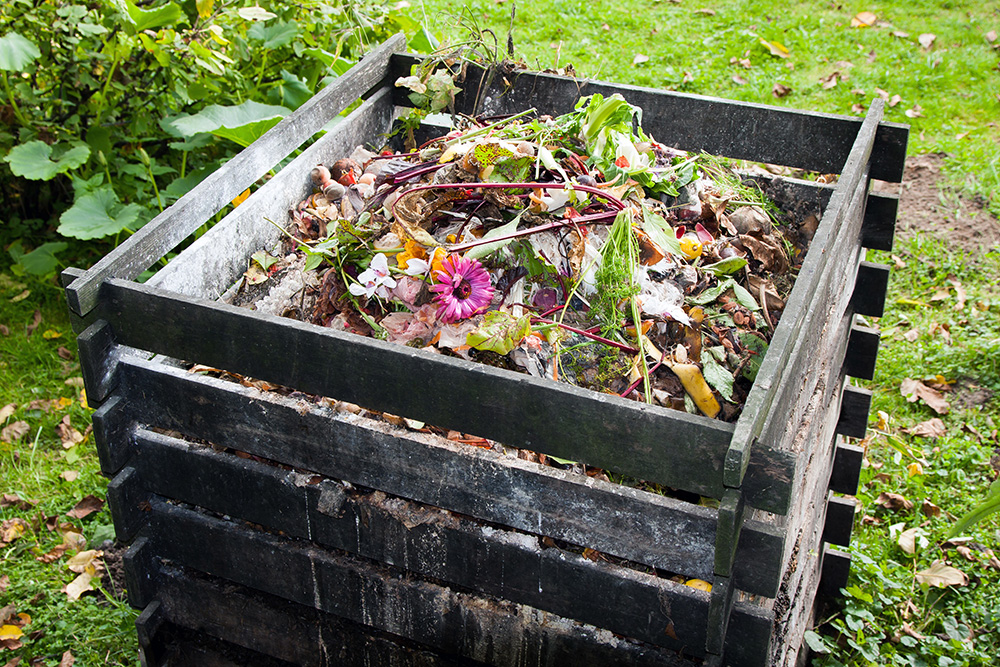
Bioplastics at Home vs. Industrial Composting
Composting at home is an excellent way to reduce waste and return carbon to the soil. However, home composting lacks the consistency and regulation of industrial composting facilities. Bioplastic packaging (even when combined with food waste) requires higher temperatures than can be achieved or sustained in a home compost setting. For large scale food scrap, bioplastics, and organics diversion, , industrial composting is the most sustainable and efficient end of life environment.
Organics in Landfills?
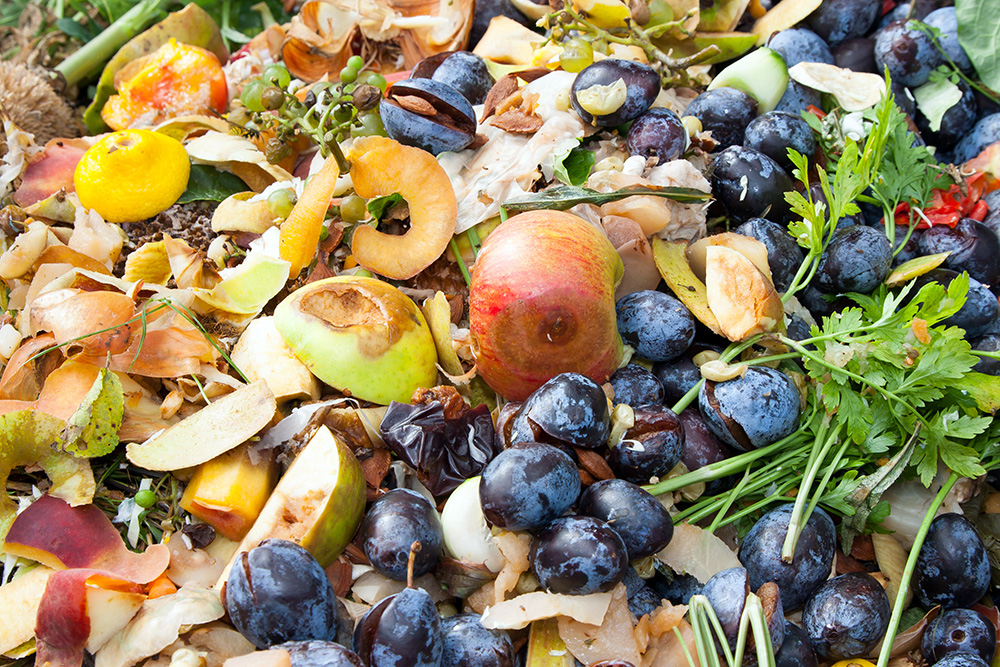
When food waste or other organic materials enters landfills, it will not biodegrade – organic material will be preserved for posterity within a landfill. This is because the microbes responsible for breaking down organics are aerobic, which means they require oxygen to function. Over time, organic material will decompose slightly and in the process off-gas methane (a harmful greenhouse gas, 23 times as potent as carbon dioxide). Because organic waste cannot fully biodegrade inside a landfill, the carbon and nutrients contained in the waste material is lost – buried for hundreds (if not thousands) of years. Composting and other organic recycling methods are the ideal way to dispose of organic waste.